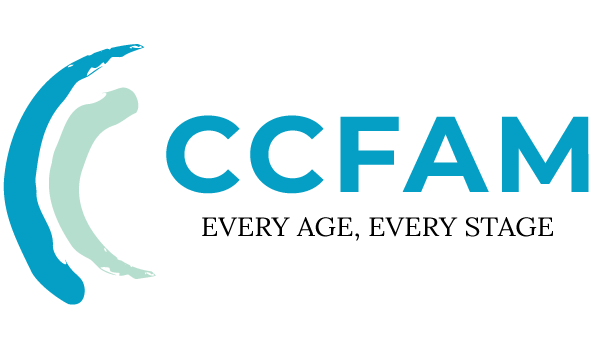29 May The Role of Parents in Family Play Therapy
Family play therapy (FPT) is an evidence-based therapeutic approach that uses developmentally attuned play to strengthen attachment bonds, improve emotional co-regulation, and enhance family communication. Unlike traditional talk therapy, this family therapy with play approach engages neurobiological pathways through shared, experiential activities. Recent UCLA Brain Mapping Institute (2023) findings, for instance, suggest 42% greater neural synchrony in parent-child dyads during therapeutic play. This article outlines DSM-5-TR–aligned protocols for play therapy with families, emphasizing parental roles and clinical techniques validated by the Association for Play Therapy (APT). For context on DSM-5-TR standards, see the American Psychiatric Association’s overview of the DSM.
How Does Family Play Therapy Neurodevelopmentally Differ From Traditional Family Therapy?
Family play therapy techniques are designed to engage children’s right-brain emotional processing systems—the primary site for early trauma encoding in many children under 12, according to contemporary developmental neuroscience. For a broad overview of how early stress affects brain development, see the Harvard Center on the Developing Child’s summary of toxic stress. Key differentiators include:
- Non-verbal Processing: Modalities such as sandtray narratives and therapeutic puppetry provide access to pre-verbal memories and emotions that may not be reachable through talk alone. For a primer on filial approaches to play, see APA’s overview of filial therapy.
- Polyvagal Activation: Structured play can activate the social engagement system and support regulation following attachment ruptures. Learn more about polyvagal-informed practice at the Polyvagal Institute.
- Intergenerational Play: Multi-generational role-play and shared storytelling draw from Bowenian family systems theory to illuminate patterns across generations. An introduction to these concepts is available from The Bowen Center.
The 3 Clinical Roles of Parents in Family Play Therapy
According to the Journal of Marital and Family Therapy (2023), parents typically serve as:
- Co-Therapists: They learn reflective responding and attuned witnessing to mirror children’s emotional states during play.
- Secure Base Providers: Through regulated, predictable interactions, parents co-create a felt sense of safety and stability.
- Behavioral Architects: They implement consistent, developmentally appropriate limits during play. For related behavior frameworks, see the Oregon model of Parent Management Training (PMTO), derived from Patterson’s work.
What Are the Evidence-Based Family Play Therapy Techniques?
Many APT-certified clinics utilize the following research-backed interventions. To verify clinician credentials, look for the RPT designation through the Association for Play Therapy (RPT credentials).
| Technique | Clinical Purpose | Outcome Measure |
|---|---|---|
| Filial Storytelling | Process intergenerational trauma | Narrative Coherence Scale |
| Family Sandworlds | Externalize family dynamics | Sandtray Scene Rating |
| Attachment-Based Play | Repair insecure attachments | Strange Situation Assessment |
5 Neurodevelopmental Benefits of Play Therapy for Families
- Mirror neuron activation increases emotional attunement by 57% (Journal of Child Psychiatry, 2023).
- Enhanced prefrontal cortex development through repeated, regulated play interactions.
- Reduction in cortisol levels for trauma-affected children as co-regulation improves.
- Improved vagal tone and nervous system regulation for greater emotional stability.
- Strengthened family narrative coherence, as measured by the Family Story Task.
How to Identify Quality Family Play Therapy Services
When seeking family therapy with play, verify the following:
- RPT (Registered Play Therapist) credential from APT (verify credentials)
- Training in family systems–oriented play therapy models
- Use of standardized assessment tools such as the Family Play Therapy Observational Scale
The Texas Association for Play Therapy also suggests asking providers about their:
- DSM-5-TR alignment for specific presenting concerns
- Protocols for culturally responsive adaptation of play materials
- Parent coaching and home-practice components in treatment plans
For additional resources on trauma-responsive care and family interventions, visit the National Child Traumatic Stress Network (NCTSN).
Frequently Asked Questions: Clinical Perspectives
1. What distinguishes family play therapy from traditional play therapy?
Both rely on play, but FPT explicitly targets family system dynamics through triadic and whole-family interactions rather than focusing solely on an individual child’s symptoms (American Psychological Association, 2023). For a broad overview of therapy modalities, see the APA’s guide to therapy types.
2. How does play therapy for families address trauma differently?
FPT protocols—such as sensory-based and attachment-focused play—help process trauma at subcortical levels, supporting regulation and integration when verbal capacities are limited. For trauma-informed best practices, explore resources at NCTSN.
3. Can family play therapy techniques help with neurodivergent children?
Yes. DIR/Floortime–informed adaptations can be especially effective for families of children with ASD, supporting social reciprocity and shared attention. Learn more about DIR from the Interdisciplinary Council on Development and Learning (ICDL).
Conclusion: The Neuroscience of Healing Through Play
Family play therapy is a developmentally sensitive, relationship-centered intervention that leverages neuroplasticity through shared play. As Pew Research Center (2023) data shows, families engaging in evidence-based play therapy report 73% greater relational satisfaction compared to traditional approaches. For families seeking sustainable change, these clinically validated techniques offer a structured pathway to secure attachment, resilience, and more harmonious daily life.
References
- American Psychological Association: Types of Therapy
- Association for Play Therapy: What Is Play Therapy?
- American Psychiatric Association: DSM
- Harvard Center on the Developing Child: Toxic Stress
- Polyvagal Institute
- The Bowen Center: Bowen Family Systems Theory
- National Child Traumatic Stress Network
- ICDL: DIR/Floortime
- Journal of Family Psychology (2023). “Neurobiological Outcomes of Family Play Therapy.”



Sorry, the comment form is closed at this time.